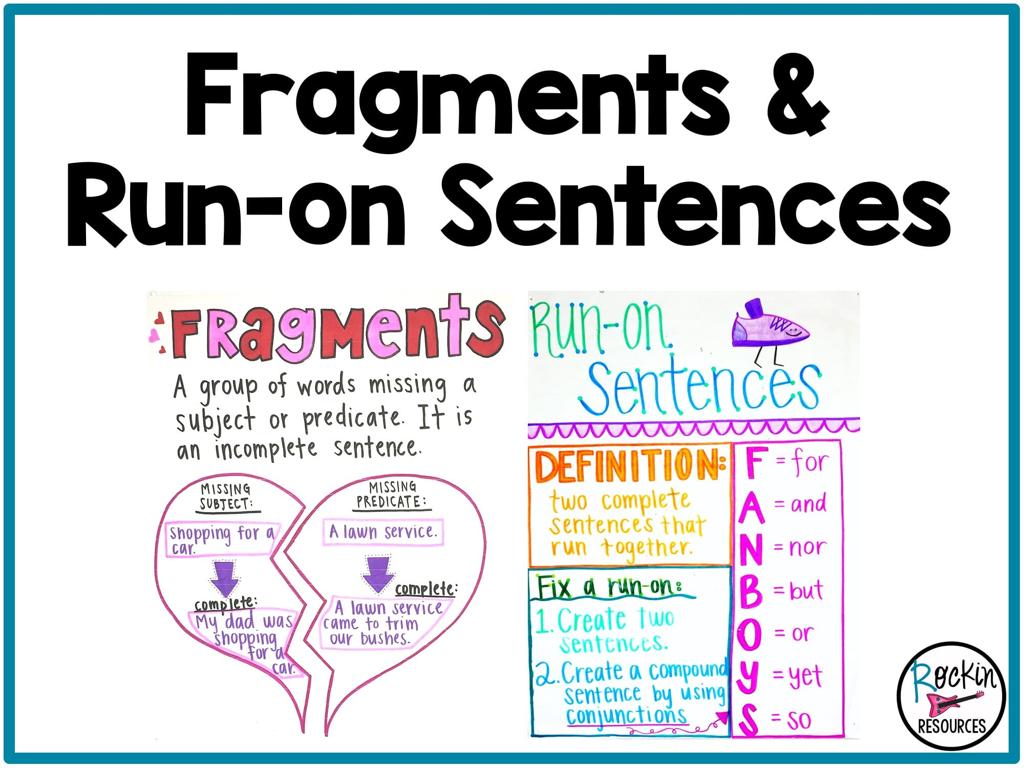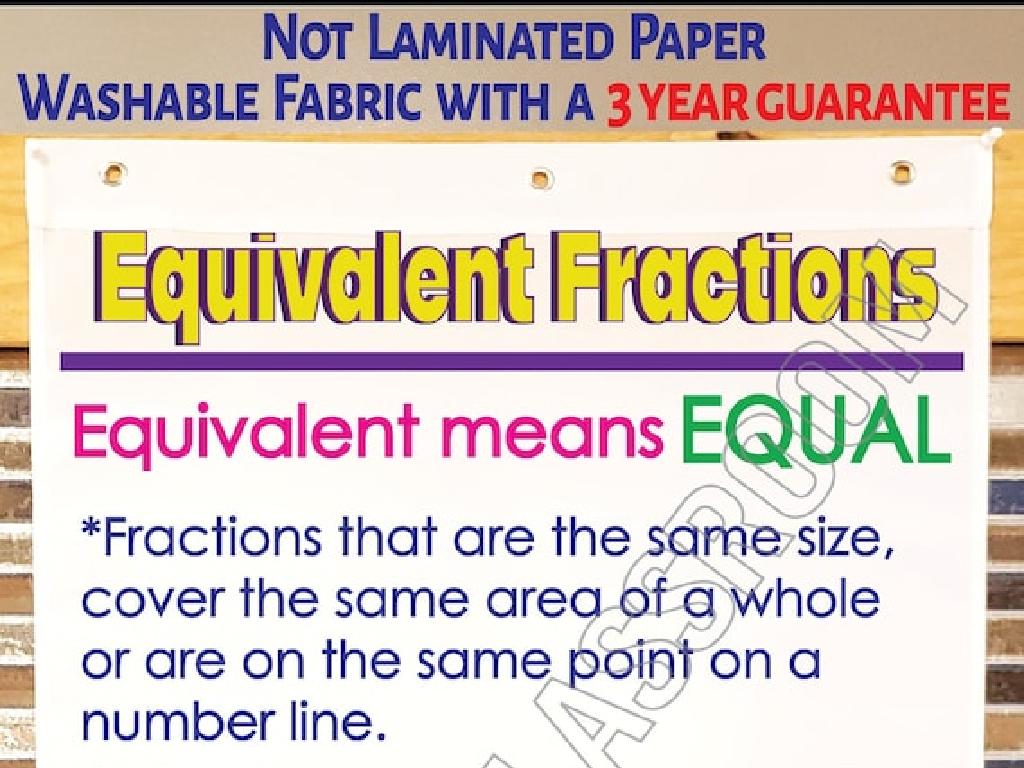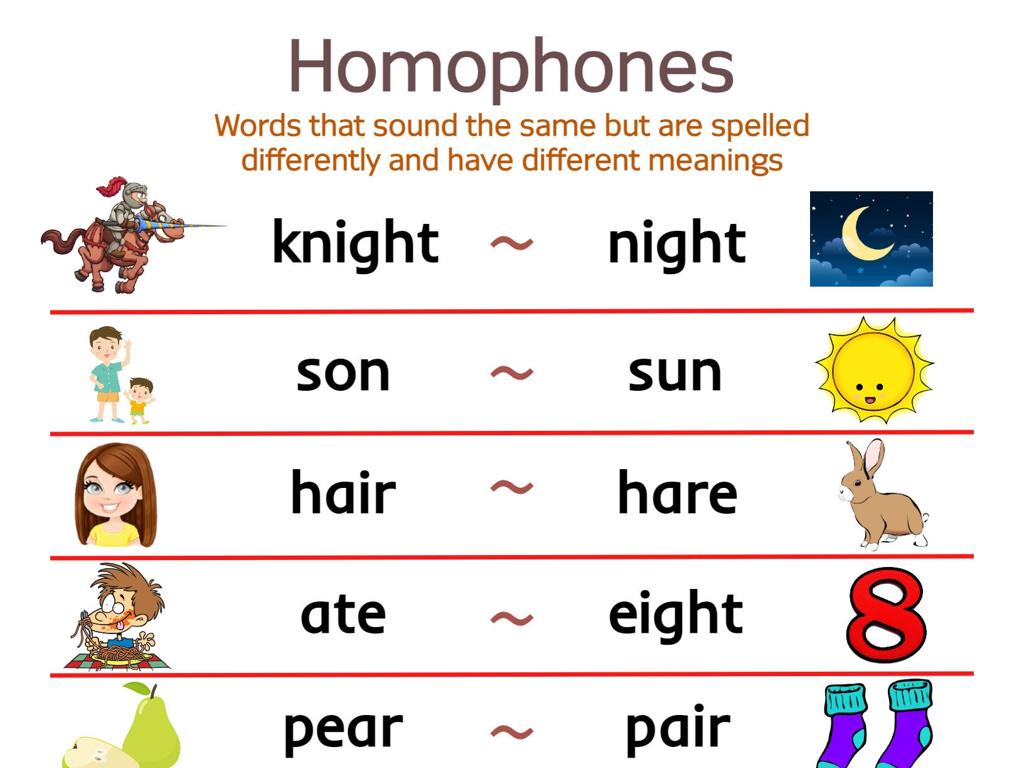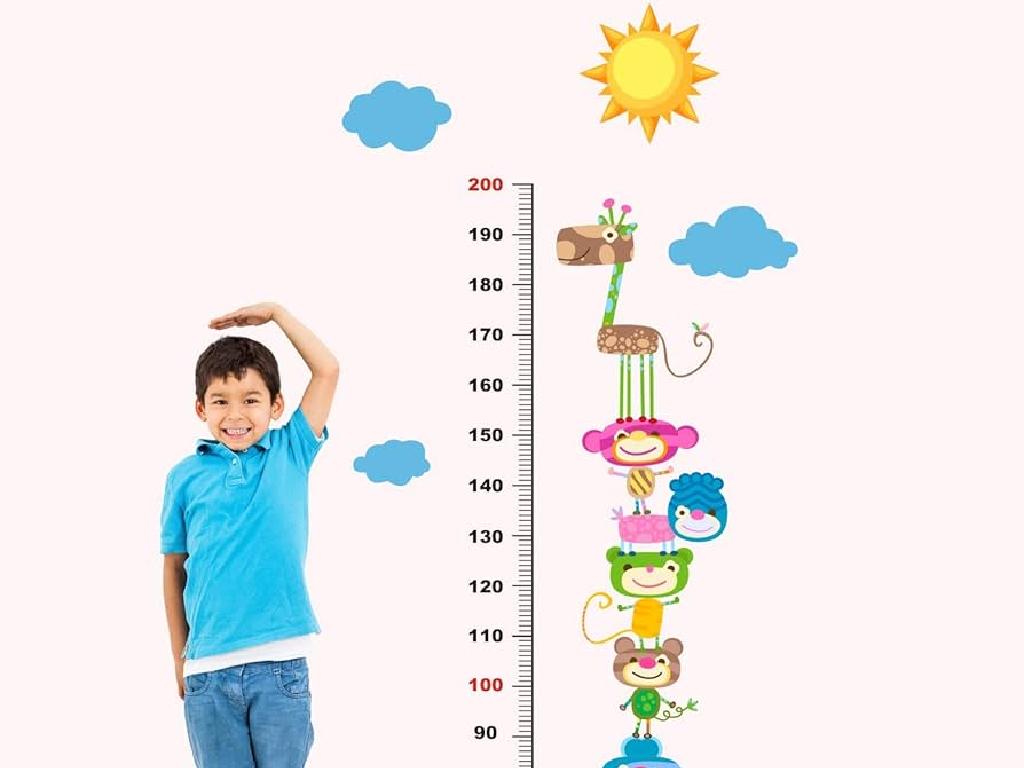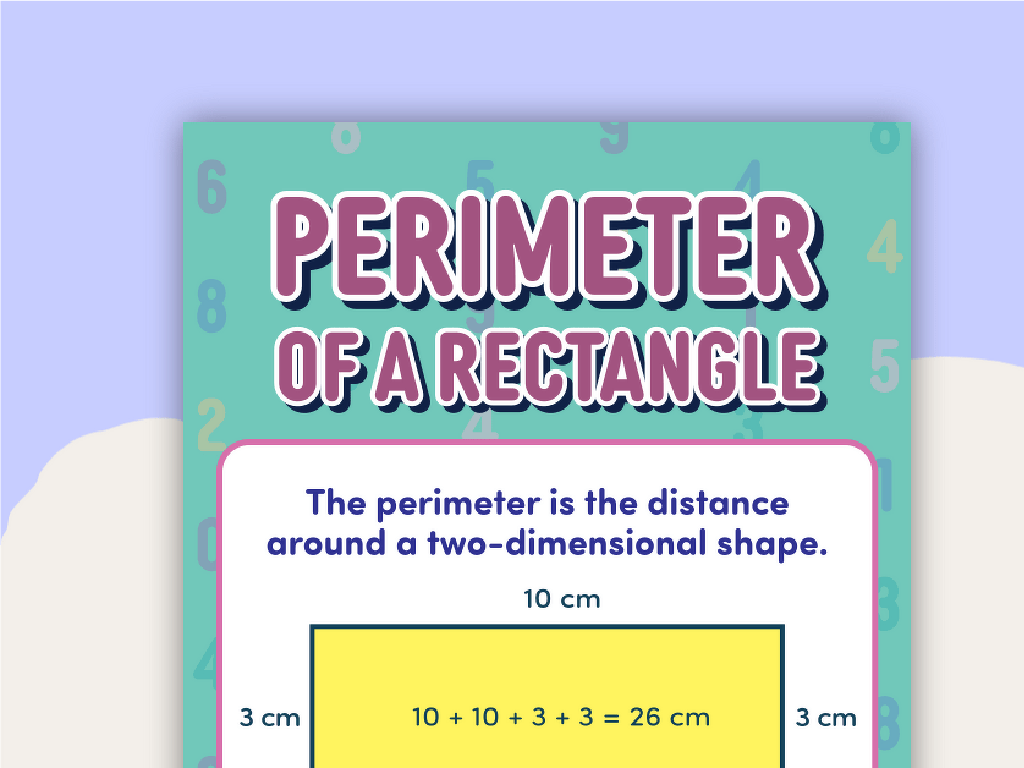How Do Rock Layers Form?
Subject: Science
Grade: Fifth grade
Topic: Rocks
Please LOG IN to download the presentation. Access is available to registered users only.
View More Content
Exploring Earth’s Rocky Layers
– Earth’s crust is layered with rocks
– Like a cake, Earth has different layers of rocks
– Rocks: The building blocks of Earth
– Rocks come in many types, each with its own story
– Today’s focus: Formation of rock layers
– How pressure, time, and sediment create layers
– Understanding sedimentary rock layers
– Sedimentary rocks form from accumulated layers
|
This slide introduces students to the concept of Earth’s crust being made up of different layers of rocks, much like the layers of a cake. Emphasize that rocks are the fundamental components of our planet. Today’s lesson will focus on understanding how these rock layers form, particularly sedimentary rock layers, which are created over time by the accumulation of sediment. Explain that sedimentary rocks can tell us a lot about Earth’s history. Encourage students to think about how layers of sand at the beach or mud in a riverbed might eventually turn into rock.
What Are Rocks?
– Rocks: Earth’s building blocks
– Solid materials made of minerals
– Types: Igneous, Sedimentary, Metamorphic
– Igneous form from cooled lava, sedimentary from layers of material, metamorphic from heat/pressure
– Everyday rock examples
– Granite countertops, sandstone buildings, marble statues
|
Begin the lesson by defining rocks as the solid material forming the surface of the Earth, composed of one or more minerals. Then, introduce the three main types of rocks: igneous, which form from the cooling and solidification of magma or lava; sedimentary, which are formed by the deposition and subsequent cementation of mineral or organic particles on the floor of oceans or other bodies of water; and metamorphic, which are formed through the alteration of other rock types in the Earth’s crust by high heat, pressure, or other chemical processes. Provide everyday examples of these rocks to help students connect the material to the world around them, such as granite countertops, sandstone buildings, and marble statues. This will help students understand the relevance and ubiquity of rocks in their daily lives.
Exploring Earth’s Layers and Rock Formation
– Earth’s layers: Crust, Mantle, Core
– The crust is Earth’s outermost layer, followed by the mantle and core.
– Rocks make up Earth’s crust
– The crust consists of various types of rocks and minerals.
– Understanding rock layers
– Rock layers, or strata, are formed over time by sediment deposition.
– Significance of strata
– Strata help us understand Earth’s history and fossil records.
|
This slide introduces students to the basic structure of the Earth, which is composed of three main layers: the crust, mantle, and core. Emphasize that the crust is the layer we live on and is made up of rocks and minerals. Explain that rock layers, also known as strata, are formed by the accumulation of sediments over time, which can turn into rock through the process of lithification. Discuss the importance of these layers in studying the Earth’s past, including the age of rocks and the fossils found within them. Encourage students to think about how the Earth’s surface changes and what these changes can tell us about our planet’s history.
Formation of Rock Layers
– Sediment deposition process
– Sediments settle out of water or air
– Layers build up over time
– Over years, layers pile up and press down
– Erosion and its role
– Erosion breaks down rocks into sediments
– Deposition, Compaction, Cementation
– Sediments get compacted and cemented to form rock layers
|
This slide introduces the fundamental processes that lead to the formation of rock layers. Begin with explaining how sediments, which are small pieces of rock, are carried by water or wind and eventually settle. Over time, these sediments accumulate in layers. As more layers build up, the weight presses down on the lower layers, causing compaction. Introduce the terms erosion (the process by which rock is broken down), deposition (the settling of sediments), compaction (the pressing together of sediments), and cementation (the binding of sediments into rock). Use diagrams to illustrate these processes if possible. Encourage students to think of examples of erosion they’ve seen, like soil washed away by rain.
Exploring Rock Layers
– Horizontal vs. angled layers
– Horizontal layers lay flat, angled layers are tilted
– Significance of layer thickness
– Thick layers suggest a longer formation period
– Rock layers as time indicators
– Older layers lie beneath younger layers
– Understanding the Law of Superposition
|
This slide aims to help students differentiate between horizontal and angled rock layers, understand the importance of layer thickness, and grasp how rock layers can indicate time through the Law of Superposition. Horizontal layers are typically undisturbed, while angled layers have been moved by forces within the Earth. The thickness of a layer can indicate the duration of deposition, with thicker layers usually forming over longer periods. The Law of Superposition states that in undisturbed rock formations, older layers are at the bottom and younger layers are at the top, allowing geologists to determine the relative ages of rock layers. Encourage students to think about how the Earth changes over time and how these changes are recorded in the rock layers.
Fossils and Rock Layers
– What exactly are fossils?
– Fossils are remains of ancient life preserved in rock.
– Fossils within sedimentary layers
– Sedimentary rocks form layers with fossils trapped inside.
– Fossils as Earth’s history clues
– They provide snapshots of past environments and life.
– Analyzing fossils in class
|
This slide introduces the concept of fossils and their significance in understanding Earth’s history. Fossils are the preserved remains or traces of animals, plants, and other organisms from the remote past. They are most commonly found in sedimentary rock layers, which are formed by the accumulation of sediments. Over time, these sediments harden into rock and may contain fossils within them. Fossils help scientists piece together the history of life on Earth and the changes in environments over millions of years. In class, we can analyze different types of fossils and discuss what they tell us about past life and environments. Encourage students to think about how fossils are like a storybook of Earth’s history.
Rock Layers and Environmental Clues
– Rock layers as environmental history
– Each layer represents a different period, showing changes over time.
– Indicators found in rock layers
– Fossils, mineral deposits, and sediment types can indicate past environments.
– Rock layers reveal past climates
– Variations in layer composition can reflect ancient climate conditions.
– Interpreting historical climates
|
This slide aims to teach students how rock layers serve as a historical record of the Earth’s environmental changes. Explain that rock layers, or strata, can show us changes in the environment by preserving evidence from the time they were formed. Give examples of environmental indicators like fossils, which can tell us what kind of life existed, or mineral deposits that can indicate the presence of water. Discuss how certain layers can provide clues about the Earth’s climate in the past, such as layers with coal indicating lush, plant-rich environments. Encourage students to think like detectives, piecing together clues from rock layers to understand Earth’s history. This will help them appreciate the complexity and dynamism of our planet’s geological and environmental past.
Class Activity: Creating Rock Layers
– Gather sand, clay, pebbles, containers
– Follow steps to layer materials
Layer sand, clay, pebbles in containers
– Observe ‘Law of Superposition’
Newest layers on top, oldest on bottom
– Record observations in science journal
|
This hands-on activity is designed to help students understand the process of rock layer formation and the Law of Superposition. Provide each student or group with the materials listed. Guide them through the process of creating layers using sand, clay, and pebbles in their containers, emphasizing that in natural rock formations, layers are created over time with newer layers forming on top of older ones. As they work, encourage students to observe the order of the layers and how this represents the Law of Superposition. Have them make detailed observations in their science journals, which can be shared and discussed in the following class. Possible variations of the activity could include using different materials to represent various types of sediment or changing the order of layering to see if students can identify the correct sequence based on the Law of Superposition.
Rock Layers: Conclusion and Recap
– Summarize rock layer formation
Layers form over time due to sediment deposition.
– Importance of rock layers
They tell Earth’s history like pages in a book.
– Reflect on today’s learning
– Get ready for Q&A session
Think of questions you may have about rock layers.
|
As we conclude today’s lesson, we’ll summarize the process of rock layer formation, emphasizing how sediments settle over time and harden into layers. Highlight the significance of these layers in understanding Earth’s history, as they act like historical records that geologists can ‘read.’ Encourage students to reflect on what they’ve learned about the formation and importance of rock layers. Finally, prepare them for a Q&A session where they can ask questions to clarify their understanding or delve deeper into the topic. This interactive session will help reinforce their knowledge and ensure they grasp the fundamental concepts of how rock layers contribute to our understanding of the planet’s past.

